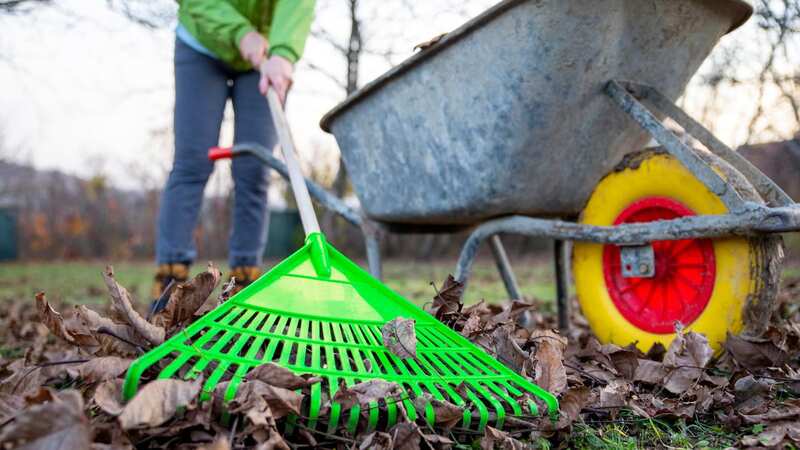Monty Don urges gardeners to use lawn-mowing trick to make 'black gold'

Autumn is an important season for garden enthusiasts, and October in particular is seen as the being "really the beginning of the horticultural year" by expert Monty Don.
While you get to work protecting your plants and blooms against the upcoming frosts and harvesting any remaining vegetables from your green space, there's one item you should definitely not forget to collect: fallen leaves.
For some, particularly those with a decent amount of paved areas in their garden, they can be seen as a bane, something that has to be got disposed of quickly to avoid slipperiness or mess. But fallen leaves aren't just a waste product, they are in fact one of the most useful fuels for your garden - so valuable it's often called "black gold" - and to top it all off, they cost absolutely nothing.
Fallen leaves that you collect at this time of year are can turn into one of the most powerful composts, mulches or soil conditioners - all it takes is a lawn mower and a little patience.
TV presenter and gardening expert, Monty Don, explains that he is "obsessive about making leafmould" from the fallen leaves in his garden. The expert explains he spends much of the autumn "gathering as many of the fallen leaves as possible, mowing them to chop them up and then stacking them in a big open heap so they can break down into a lovely rich, crumbly texture and become an essential component of our home-made potting compost."
 Mystery as hundreds of tiny fish wash up dead on UK beach leaving locals baffled
Mystery as hundreds of tiny fish wash up dead on UK beach leaving locals baffled
Such is his passion for the homemade compost, he has written regularly about it on his website, where he details that "leaves decompose mostly by fungal action rather than bacterial which means that dry leaves can take an awful long time to turn into the lovely, friable, sweet-smelling soft material that true leafmould invariably becomes. So either gather leaves when they are wet or be prepared to dampen them with a good soaking before covering them up with the next layer."
Chopping them up is an important part of the process, and doing this with your lawn mower when they are too wet means that it can get clogged up, so instead Don recommends sweeping and raking them "into a line when dry, run the mower over them and then give them a soak with the hose" once they are safely where you plan to store them. The best leafmould will take about two years to rot fully in your storage, but if you choose to use some of it before this, it is still a powerful soil conditioner and can be used as a mulch, top soil or winter covering.
For storage, the TV presenter says a "special chicken wire-sided bay" is best. This is created by choosing a spot in your garden that will be relatively shaded in the hot summer months, according to Monty Don for Gardener's World. You then take around a squared metre of weed-smothering membrane - because any weeds growing in your leafmould can disrupt the rotting process and stop you from being able to use it - which you will use as the lining of your heap. Then hammer four tree stakes into the ground, forming a square, about a metre apart from each other. You then need to cut a length of chicken wire, or something similar, long enough it will go around all four posts with a extra to overlap, you'll then secure it with twine or gardening wire. Then you simply start adding your chopped leaves.
If you don't have space in your garden to dedicate to a heap, not to worry, there is another way. "If you don't have room for a dedicated leaf bay," says Don, "then put the mown leaves into a black bin bag, punch a few drainage holes in the bottom, soak them and let it drain and then store it out of sight. This system works perfectly well."
Do you make leafmould? Let us know in the comments below.
Read more similar news:
Comments:
comments powered by Disqus
































